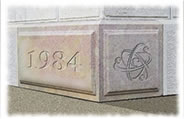Finding Truth
“Once a person is caught by belief in a doctrine, one loses all one’s freedom. When one becomes dogmatic, that person believes his or her doctrine is the only truth and that all other doctrines are heresy. Disputes and conflicts all arise from narrow views. They can extend endlessly, wasting precious time, even lead to war. Attachment to views is the greatest impediment to the spiritual path. Bound to narrow views, one becomes so entangled that it is no longer possible to let the door of truth open.”
—Thich Nhat Hanh, Vietnamese monk, peace activist, author (1926-2022)
One of the most dangerous aspects of life is our tendency to adopt a point of view, allow it to evolve into a belief, then close our minds to any other point of view, then move on and start thinking that all other points of view are suspect and deserving of destruction.
We suggest an alternative approach: to support a practice; instead of a viewpoint.
From our perspective, viewpoints are flexible, growing, evolving tools that human beings use to navigate the shifting landscape of ideas and practices in the world. But if one gets married to a point of view, to their idea of truth, it makes recognizing a better idea rather more than difficult, if not impossible.
What if, instead of adopting a viewpoint, then turning it into an article of faith, we adopt a practice of constantly evaluating and testing the usefulness, the value, the accuracy of an idea or viewpoint? Then, we could submit anything new to a “Test Against the Standard,” and reach an unbiased conclusion.
We call that standard, the Truth Functions (outlined below). The Truth Functions are an ever more precise and lofty set of evaluation criteria against which any idea, statement or practice can be measured.
So, for example, if you’ve grown up practicing human sacrifice; you could (for purposes of self-development) re-examine your views in a new moment, decide to be “sacrifice agnostic” for purposes of self-discovery, and rate the practice against the Truth Functions and against the Ethics Equation.
Starting from a non-committed viewpoint, using a non-aligned test might give you a sound basis for continuing, or changing your considerations about what is true, workable and, in the end; good. After all, perhaps that person sitting next to you isn’t “an offering,” but “a colleague.”
Truth. Everyone thinks they know it. But few can tell you why their truth is correct, useful, or from where it comes. Why not examine the Truth Functions and submit your life and its attendant truths to the acid test?
Hold your beliefs up against the standard, and discover how they measure up!
The Truth Functions
1. Is it explanatory? (Do things become clearer in light of this concept?)
2. Is it workable? (Things should work if we rely on them. Yes?)
3. Is it freely available? (Does it come with an Allegiance Test?)
4. Is it rational? (Based on reason or logic… i.e., Does it make sense?)
5. Is it ethical? (Is it good across the domains?)
6. Does it align with or build upon what we know? (Does it derive from or expand a family of wisdom?)
7. Is it indicative or revelatory? (Do we have positive cognitions in its presence?)
8. Does it enlarge us, or take us higher? (Does it suggest a greater, loftier, perspective?)
Applying these measures to a new rule or concept is a great way to evaluate the applicability, functionality, value, depth in essence and the Truth Value of the new idea.
Excerpted from Jennifer StJohn’s book, Holosophy®: Conquering Your Fear of Success.
Subscribe to our Newsletter


